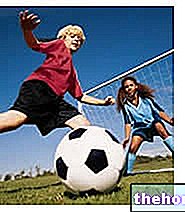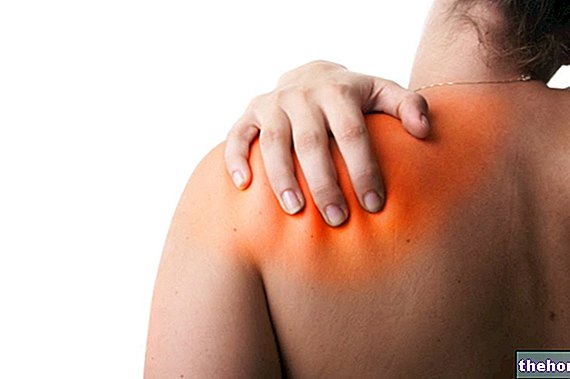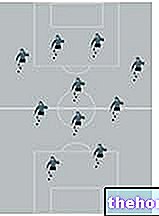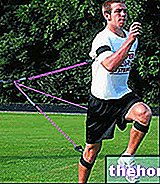If the ball arrives too fast or far from where the goalkeeper is, it is necessary to dive, that is to give life to an "aerial action with subsequent relapse."
The dive changes according to the height, distance and speed of the ball. In the event of a sudden, close and grazing ball, the goalkeeper must remove the support of the pushing foot in order to speed up the fall. If the balls come grazing from medium distance, the goalkeeper must take a lateral step of the pushing limb (which is the inside one with respect to the ball) and the body must be directed towards the ball; the catch is carried out with the thumbs converging.
The dive on the half-height side balls is the easiest to perform and gives the greatest guarantees of success. The lateral movement of the pushing leg, that is the one closest to the ball, is similar to that of the grazing dive. The difference is in the loading of the push leg and in the direction of the push itself, which must be facing in relation to the ball and its height.
JACK
The grip of the ball changes depending on whether the ball reaches the ground, high or medium height. The speed of the ball is also important, not to mention the slipperiness factor, which occurs when the conditions of the field are not optimal.
The best techniques for catching the ground ball can be summarized as follows:
- keep the legs straight, bending the torso forward in front of the incoming ball;
- position yourself on your knees sideways, with your torso turned towards the direction of arrival of the ball.
The straight legs technique is used when the goalkeeper is already behind the direction of the ball: the legs are extended but not rigid and the feet are slightly apart. A moment before the ball arrives, the torso is flexed forward, the arms are extended forward-down and the hands are brought towards the ball with the thumbs pointing outwards. As soon as the ball is caught with the hands, these they close and guide it on the arms, and then bring it to the chest.
In the lateral knee block, the flexing knee is opposite to the direction of travel. The feet are oriented in the direction of movement, while the trunk is moved towards the ball. The arms are brought down and the hands are pointing forward with the thumbs out.
Balls that arrive at half height: from the waiting position, the arms reach out towards the ball with the palms of the hands facing down and the thumbs outwards. The ball is stopped at the chest and the arms hold it.
When the ball reaches high, above the head or at the height of the head, the hands must be placed behind the run of the ball, the arms extended (but soft) and the hands facing the ball with the thumbs converging. The fingers are open. and tense, but able to cushion the arrival of the ball.
DEVIATION
The deflection is made when the goalkeeper is unable to take the ball safely. Usually, the goalkeeper stretches out in a dive and reaches the ball with one hand, deflecting its trajectory and sending the ball to a non-dangerous area. The deviation can also be done with the palm of the hand or with a closed fist.
On the occasion of violent shots or with wet balls, it is possible to carry out the rebound with the two closed fists.
For balls that arrive from the front, it is advisable to use both fists: when contact with the ball occurs, the arms must extend and direct it upwards.
STORAGE WITH HANDS
If the teammate is just outside the penalty area (or closer) and there is no disturbing action from the opponent, the ball can be transmitted by the goalkeeper by rolling it low to the feet of the player, who can then resume. action quickly.
In the event that you want to throw a ball quickly, or the field is wet, you can transmit the ball through a movement that starts from over the shoulder and then brings the ball to hit the ground to get it to a height and speed that can be controlled by the partner.
If the player you want to reach and away from the goalkeeper, the barbell throw is used, that is, the arm (with the ball) is brought out-back and, through a "torsion action of the torso, forward with subsequent release of the ball.
STORAGE WITH FEET
When the ball crosses its own endline due to the opponent, the throw-in is taken with the feet inside the goal area.
REFERENCE
The postponement can be made on the fly, or by drop. The volley is performed by kicking the ball in front of you.
The postponement of drops is carried out if the ground is in good condition. The ball is thrown forward and kicked on the rebound of the ball on the pitch. In this case the ball will have a tighter and more easily playable trajectory by the attackers, but it is less precise and more prone to error.
Other articles on "Soccer: the goalkeeper and his athletic gestures"
- Soccer goalkeeper training
- Tactics in football




























